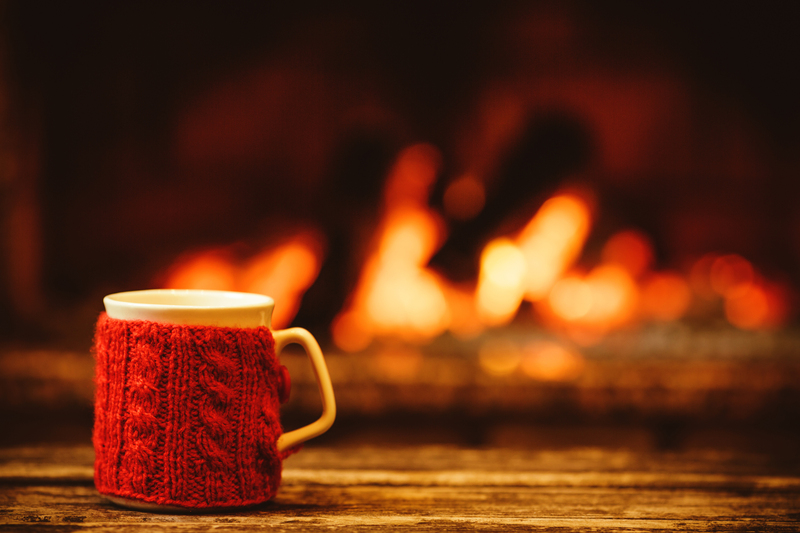Revive Your Stovetop: How to Erase Burnt Residue Effortlessly
Is your stovetop struggling under the weight of scorched remnants and burnt residue? Don't despair--or resign yourself to scrubbing for hours. Reviving your stovetop can be far easier than you think! Whether you're facing stubborn stains from spilled sauces or caked-on grease, this comprehensive guide will teach you precisely how to erase burnt residue effortlessly and restore your kitchen's sparkle.
Why Erasing Burnt Stovetop Residue Is Essential
Burnt residue isn't just an eyesore--it can impact the lifespan and performance of your cooktop. Over time, buildup can interfere with heating efficiency, release unpleasant odors, and even harbor bacteria. Plus, a clean stovetop enhances your kitchen's aesthetics and inspires culinary creativity! With proper care, you'll prevent permanent discoloration and costly repairs.
- Improved Safety: Grease and food build-up increase the risk of flare-ups or kitchen fires.
- Better Taste: Unpleasant odors from burnt stains can taint the flavor of your dishes.
- Longer Appliance Lifespan: Regular cleaning prevents corrosion and mechanical issues.
- Effortless Maintenance: A spotless stovetop is easier to wipe down after everyday use.

Know Your Stovetop: Different Surfaces, Different Strategies
Before diving into ways to erase burnt-on residue, it's vital to identify your stovetop type. This ensures you use the right tools and techniques for spotless results and no accidental damage.
1. Gas Stovetops
Gas cooktops often have removable grates and burners. While sturdy, they can accumulate grease and food debris in crevices. Avoid submerging the gas elements themselves in water.
2. Electric Coil Stovetops
Electric coils are durable, but food can easily get stuck between the coils and beneath the drip pans. Coils can be lifted out but should never be soaked or immersed in water to prevent damage.
3. Glass or Ceramic Stovetops
Glass and ceramic stove surfaces are stylish, but they scratch easily. Avoid abrasive cleaning pads and always use gentle, non-scratching cleaners.
Essential Supplies to Revive Your Stovetop
Gather these handy items before you begin cleaning. Using the proper products helps erase burnt residue effortlessly.
- Baking soda - A powerhouse natural cleanser.
- White vinegar - Dissolves mineral deposits and cuts grease.
- Non-abrasive sponges or cloths - For safe scrubbing.
- Plastic scraper or old credit card - To lift stubborn bits gently.
- Dish soap - Degreases and cleans up residue.
- Paper towels or microfiber cloths - For shining and polishing.
- Rubber gloves - To protect your hands.
- Lemon or lemon juice (optional) - Adds fragrance and boosts cleaning power.
Step-by-Step Guide: How to Erase Burnt Stovetop Residue Effortlessly
1. Preparation: Cool Down and Remove Loose Debris
Always allow your stovetop to cool completely before cleaning. Remove burner grates and any removable parts. Wipe away crumbs and loose particles using a damp cloth or paper towel.
2. Attack Burnt Residue with Baking Soda Paste
Baking soda is a gentle abrasive that won't harm most surfaces. Here's how to use baking soda to erase burnt-on residue:
- Mix equal parts baking soda and water to form a thick paste.
- Apply the paste liberally over burnt spots.
- Let it sit for 10-20 minutes--this loosens burnt-on food and residue.
- Gently scrub with a non-abrasive sponge in circular motions.
- Wipe away loosened grime with a damp cloth.
3. Use Vinegar for Extra Cleaning Power
White vinegar is exceptional for dealing with tough deposits. Spray full-strength vinegar on the affected areas, let it fizz for 5-10 minutes, then wipe clean. For particularly stubborn burnt-on stains, add a sprinkle of baking soda before applying vinegar for extra foaming action!
4. Try a Plastic Scraper for Stubborn Spots
If residue persists, use a plastic scraper or an old credit card--never metal, as it can scratch. Carefully scrape at the burnt bits. Repeat with more baking soda if needed. Always use gentle pressure!
5. Clean Burner Grates and Drip Pans
Soak removable grates and pans in hot, soapy water for 15-30 minutes. Scour with a brush or sponge before rinsing and drying thoroughly. For extra-tough grime, sprinkle on baking soda or use a paste.
6. Final Polish and Shine
Once the residue is gone, wipe the entire stovetop with a solution of dish soap and warm water. Rinse well. Dry and buff to a shine with a clean microfiber cloth.
Advanced Solutions for the Most Stubborn Burnt Stovetop Stains
Some burnt residues seem nearly impossible to remove--but don't give up! These advanced methods can help erase even the most persistent burnt-on stovetop stains.
1. Steam Cleaning the Stovetop
Steam is a powerful, chemical-free cleaner. Dampen a towel and microwave it until steaming, then carefully lay it over the burnt areas for a few minutes. The heat will soften the residue, making it easier to wipe away.
2. Commercial Cleaners
If natural approaches aren't enough, consider specialized stovetop cleaners. Look for products designed for your stove's material (e.g., glass cooktop cleaner, stainless steel cleaner). Always follow manufacturer instructions and test on a small area first.
3. Hydrogen Peroxide and Baking Soda Paste
Mix two parts baking soda with one part hydrogen peroxide for a potent cleaning paste. Spread it on burnt spots and let it sit 30-45 minutes before scrubbing and wiping clean.
4. Magic Eraser (Use with Caution)
Magic erasers can be effective, but may damage delicate surfaces. Spot-test first and use light pressure only on durable areas.
5. Razor Blade for Glass Stovetops (Extreme Care Required)
For truly hardened residue on glass cooktops, a single-edge razor blade held nearly flat can sometimes help. Proceed slowly, avoiding scratching the surface. This technique should be reserved for severe cases.
Proactive Maintenance: How to Prevent Burnt Stovetop Residue
The best way to avoid the hassle of deep cleaning is to prevent residue from baking on in the first place. Follow these habit-forming kitchen tips to keep your stovetop looking like new:
- Wipe spills immediately: Clean up splatters while the surface is still warm (but safe to touch).
- Use burner liners: Place disposable or washable liners under burners to catch drips and spills.
- Use pots and pans of the right size to prevent boil-overs.
- Deep clean your stovetop at least once a week, even with quick wipes daily.
- Maintain clean burners and grates to ensure even cooking and prevent scorching.
Common Stovetop Cleaning Myths and Mistakes
1. "You need harsh chemicals to clean burnt stains."
This is a persistent myth. Simple ingredients like baking soda and vinegar are often just as effective without damaging your stove or risking your health.
2. "Scrubbing harder gets better results."
Too much pressure and abrasive materials may scratch or dull your stovetop. Let cleansers do most of the work.
3. "All stovetops can be cleaned the same way."
Remember: what works for a gas range may not suit a delicate glass cooktop. Always consult your appliance manual!
When Should You Call a Professional?
If you've tried everything and the residue just won't budge, or if your appliance is under warranty, it may be time to contact a qualified appliance technician or professional cleaning service. This is especially important if dealing with suspected wiring or burner issues, or if you notice discoloration, chipping, or cracks in a glass stovetop surface.

Frequently Asked Questions About Erasing Burnt Stovetop Residue
Q: Can I use oven cleaner on my stovetop?
A: Oven cleaners are too harsh for most stovetop surfaces, especially glass and ceramic. Stick to stovetop-specific or gentle natural cleaners.
Q: How often should I deep-clean my stovetop?
A: Deep clean once a week or whenever you notice spills. Prompt cleaning prevents burnt residue from forming.
Q: What's the best way to clean cast iron burner grates?
A: Soak in hot, soapy water followed by a good scrub with a brush. Avoid dishwashers or harsh detergents that remove seasoning from cast iron.
Q: Why won't burnt stains come off my glass cooktop?
A: Burnt-on sugar, syrup, or plastic can bond to glass. Try baking soda, vinegar, or a special glass cooktop cleaner. Persistent residue may need gentle scraping with a razor blade and plenty of patience.
Bring Back the Shine: Keep Your Stovetop Spotless
Burnt residue doesn't have to be a permanent fixture on your kitchen range. By following the tips and techniques outlined above, you'll revive your stovetop effortlessly, prolong its life, and ensure every meal starts clean. Whether you're a seasoned chef or a busy parent, a pristine stovetop is always within reach!
Bookmark this page or share it with friends: a sparkling stovetop is the secret ingredient to a warm, inviting kitchen. Start cleaning today, and fall in love with your cooking space all over again.


